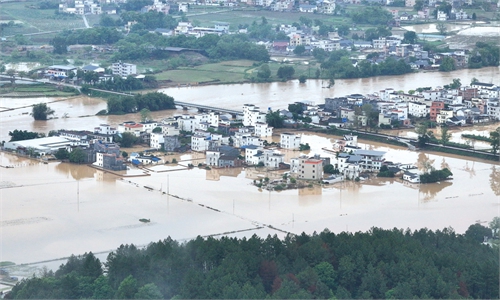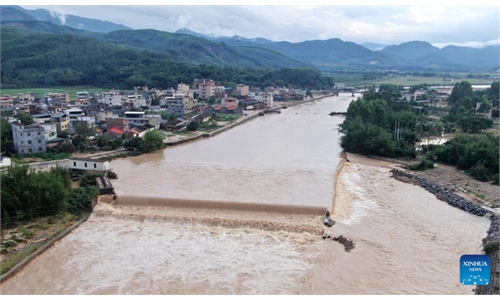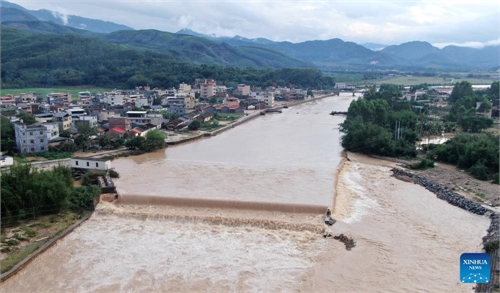S.China's Guangdong faces continued heavy rainfall; flood relief efforts carried out effectively

Shaoguan, South China's Guangdong Province on April 24, 2024. Photo: IC
The latest round of rainfall in southern China was forecast to peak on Thursday, with South China's Guangdong Province being the center of the heavy rainfall. Meanwhile, most regions in northern China are expected to see significant warming, with daytime temperatures reaching around 30 C in some places, according to China's National Meteorological Center.The meteorological center continued to issue warnings for heavy rainfall and severe convective weather on Thursday.
Multiple rounds of heavy rainfall have occurred in southern China in April, with above normal levels of accumulated precipitation during the same period. The precipitation in South China is more than twice the normal level for the same period recorded in previous years, making it the second-highest level since 1961, according to meteorological authorities.
Chinese authorities have strengthened flood relief efforts including dispatching relief supplies, relocating flood-affected residents, and enhancing monitoring, forecasting, and early warning systems in recent days to reduce risks and prevent secondary disasters.
The People's Liberation Army (PLA) and the People's Armed Police Force have assisted in emergency rescue and disaster relief in Guangdong. As of 8 pm on Wednesday, a total of 3,928 residents had been relocated, said Wu Qian, spokesperson for the Ministry of National Defense, at Thursday's press briefing.
The Shaoguan detachment under the People's Armed Police deployed 300 soldiers to Jiangwan town, one of the most severely flood-affected areas in Guangdong. They marched for more than 30 hours to reach the town, as the region experienced heavy rainfall, and roads, communication lines, and electricity were cut off, leaving the town isolated, according to the Southern Theater Command of the PLA.
As of 7 pm on Wednesday, all the residents affected in Jiangwan town had all been transferred, as the region is expected to experience a new round of heavy rainfall to last until Friday, with a high risk of geological disasters, according to Guangdong authorities.
The Global Times has learned from the Shaoguan authorities that relevant local departments have been working around the clock in rescue and flood relief efforts.
Zheng Zhihai, chief forecaster at the National Climate Center said that the frequent rainfall in southern China is closely linked to the El Niño phenomenon. Since April, the strong subtropical high pressure in the western Pacific has been directing water vapor from the South China Sea and the Bay of Bengal toward southern China, according to the meteorological authorities on Wednesday.
Experts also reminded farmers to regularly clean ditches and drains, remove excess water from fields, and avoid conducting spring sowing during the period of heavy rainfall. "The impact of the round of heavy rainfall on rice planting in Guangdong is limited," Li Guoxiang, a researcher at the Rural Development Institute, Chinese Academy of Social Sciences, told the Global Times on Thursday.
After the heavy rain, it is important to promptly take measures such as replanting and other technical methods to reduce the impact. Also, the local farmers will strengthen pest and disease monitoring and adjust fertilization accordingly, said Li.



